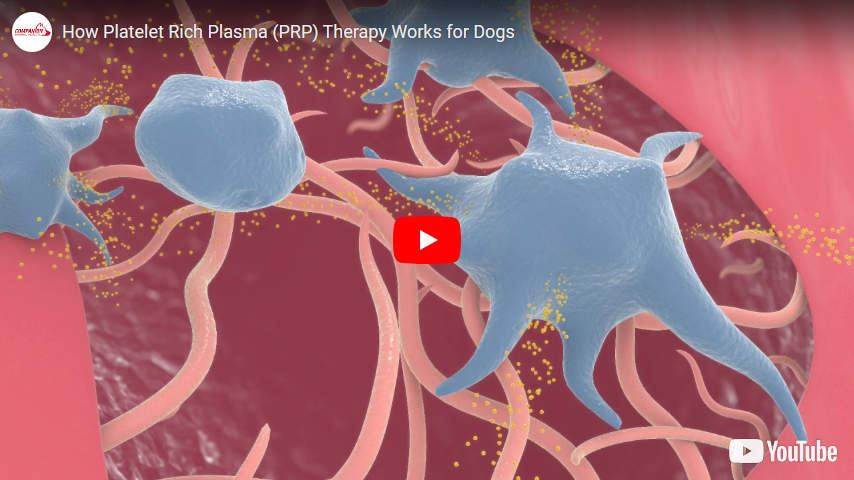Regenerative Medicine Service

We believe that our pets should have access to cutting-edge veterinary care. One of the many ways we are able to offer this is with our Regenerative Medicine service. Regenerative medicine refers to using the body's own cells (namely platelets and stem cells) to help regenerate certain tissues.
Regenerative medicines offer a drug-free, proven, long-lasting and effective method of managing the following situations in cats and dogs:
- Arthritis.
- Acute and chronic soft tissue injuries.
- Ligament trauma including cranial cruciate disease.
- Tendon damage including biceps, calcaneal (Achilles) and supraspinatous tendon injuries.
- Certain spinal conditions.
The two types of regenerative medicine we offer at Park House fall into two groups. One or both systems may be appropriate to your pet.
Platelet-rich Plasma (PRP)
PRP is harvested from your pet's blood and refined to a fraction of liquid containing a high concentration of platelets. Platelets contain a high quantity of growth factors which help facilitate the repair and healing process.
Stem Cell Therapy
Stem cells are cells that have the amazing ability to differentiate into any tissue type, for example cartilage or ligament, depending on the environment they are placed in. Think of them like the building blocks of healthy tissue. They can also activate other surrounding cells to help with the healing process.
Our surgeons have vast experience of the many different systems for stem cell and PRP delivery that have been available over the past 10 years. After years of research and clinical application, we are proud to offer our patients access to the Companion Animal Therapies PurePRP system. This is the only system available that has been validated for use in animals, with other systems being largely repurposed from human medicine. This means the PurePRP system has been shown to adequately concentrate the highest number of functional platelets and more importantly remove the highest numbers of inflammatory white blood cells from the PRP injection. This gives us the best possible chance of treatment success.
Case Study One
Mia


Mia is an active three-year-old German Shorthaired Pointer who had a recurrent forelimb lameness. Investigation via CT and ultrasound imaging was used and revealed that Mia had a supraspinatous tendon injury. This was visible via areas of hard mineralisation within the tendon body and ultrasound evidence of tendon fibre disruption. Initial therapy involving the use of anti-inflammatory medications, and later steroids injected around the tendon, gave only a short-term improvement, with Mia soon relapsing as exercise was reintroduced.
A treatment plan involving the use of Mia's bone marrow derived stem cells (BMAC) and PRP was planned. Under anaesthesia, Mia had bone marrow collected from a small hole on the top of her thigh. The bone marrow was then processed using the Companion BMAC kit to provide an injection of pure stem cells. At the same time, a blood sample was taken from Mia and processed to provide an injection of PRP.
Both agents were then mixed and injected under ultrasound guidance into the defects within the tendon.
The improvement in Mia's comfort was noticeable within days of the first injection. Given the complexity of Mia's condition, two further ultrasound guided PRP injections were made after two and four weeks.
Case Study Two
Mimi
Mimi is a 12-year-old cat with a long history of discomfort from elbow arthritis, diagnosed via x-rays. Mimi was being treated with steroids for a long term skin allergy meaning that regular therapies for arthritis such as non-steroidal anti-inflammatories were not available for her to use. PRP treatment however could be used safely alongside her steroid therapy.
Mimi was sedated to allow a quantity of blood to be sampled and processed to provide a PRP injection. The PRP was then injected under sterile conditions into each of her elbow joints.
That evening, Mimi's owner reported that she was far more comfortable immediately after receiving the injection. Normally we expect our patients to take 10-14 days to show improvements, but some may show immediate benefits.
Since the initial dose of PRP, Mimi appears to be limping a lot less, and is even able to groom herself more comfortably.



